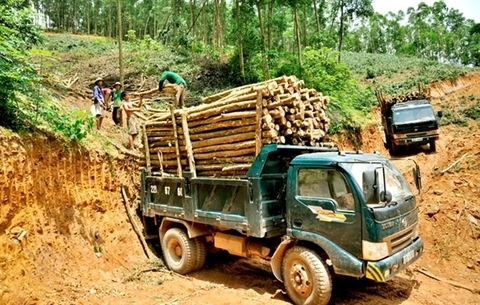The ideas are expected to come from relevant ministries and sectors, experts and the public.
The draft decree will include criteria and procedures for the classification of timber exporting enterprises and timber products, and for tracing the origins of imported wood. It will consist of seven chapters and 28 articles.
The ministry said the decree is necessary to ensure the legality of Vietnamese timber in conformity with the Voluntary Partnership Agreement on Forest Law Enforcement, Governance and Trade (VPA/FLECT), which was ratified by the EU and Vietnam on October 19, 2018 to address illegal logging and promote trade of legal timber products.
The agreement came into force on June 1.
    |
 |
|
Farmers load forest wood onto a truck in the central highlands province of Gia Lai. Photo baogialai.com.vn |
VPA/FLEGT aims to ensure improved forest governance through which all timber and timber products exported from Vietnam to the EU and other markets are legally produced and traded.
Under the agreement, the Vietnamese Government is committed to maintaining strict control over the origin of timber as the products are imported, transported, processed, traded and exported.
According to MARD, the revised Forestry Law was approved by the National Assembly (NA) in 2017 and came into effect on January 1, 2019, covering guidelines and policies of the State on forest management, development, protection and product management. The NA assigned the Government to build and operate a system of regulations for legal timber.
Vietnam exports timber products to 120 countries and territories, including major markets such as the EU, the US, Japan, China, the Republic of Korea and Australia.
In 2018, Vietnam’s export of wood and timber products reached a record value of USD 9.3 billion, USD 900 million of which was to EU markets.
Source: VNA